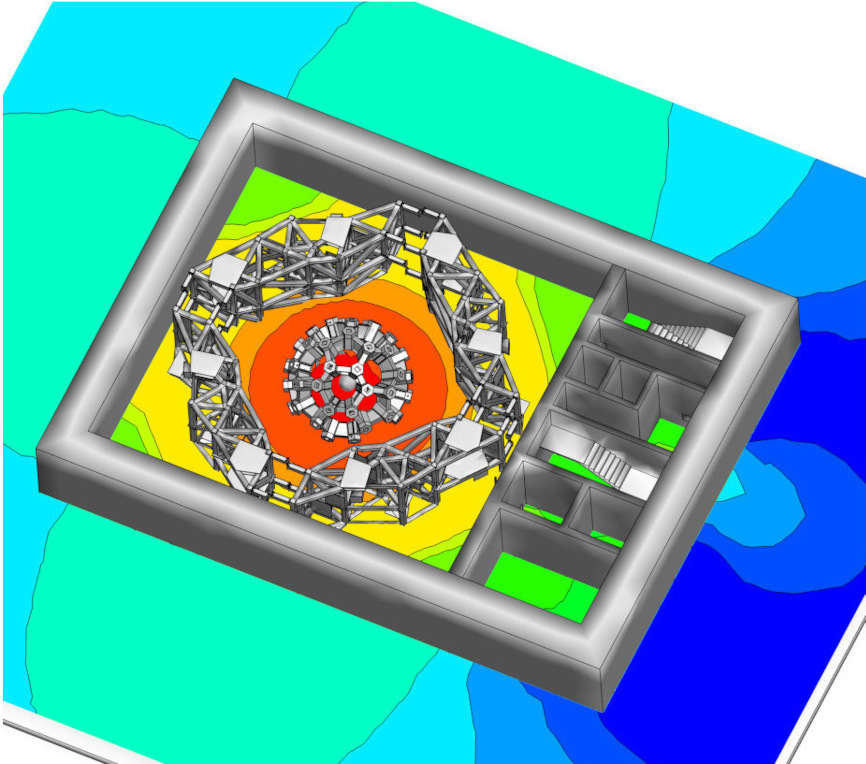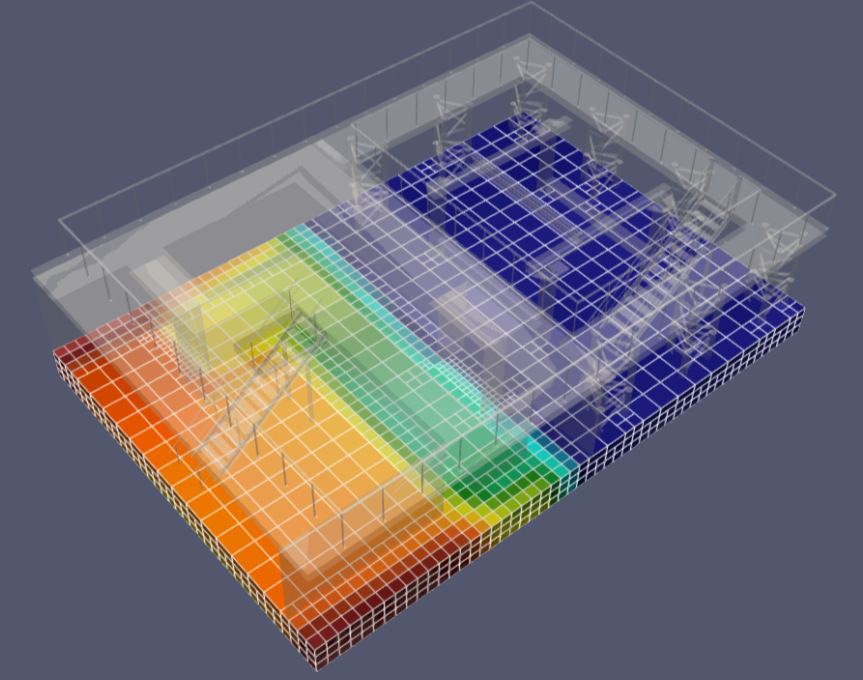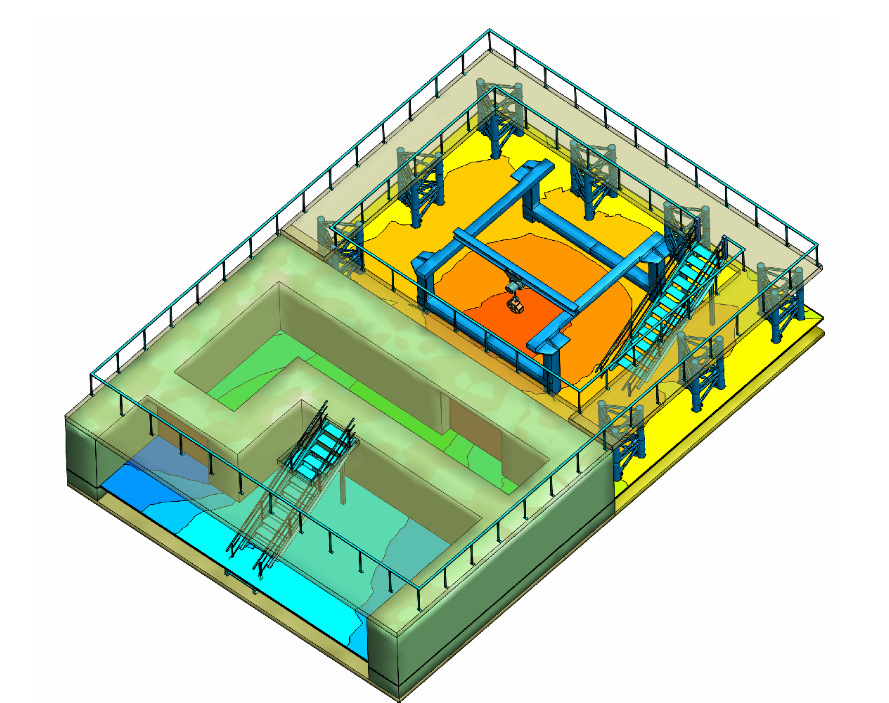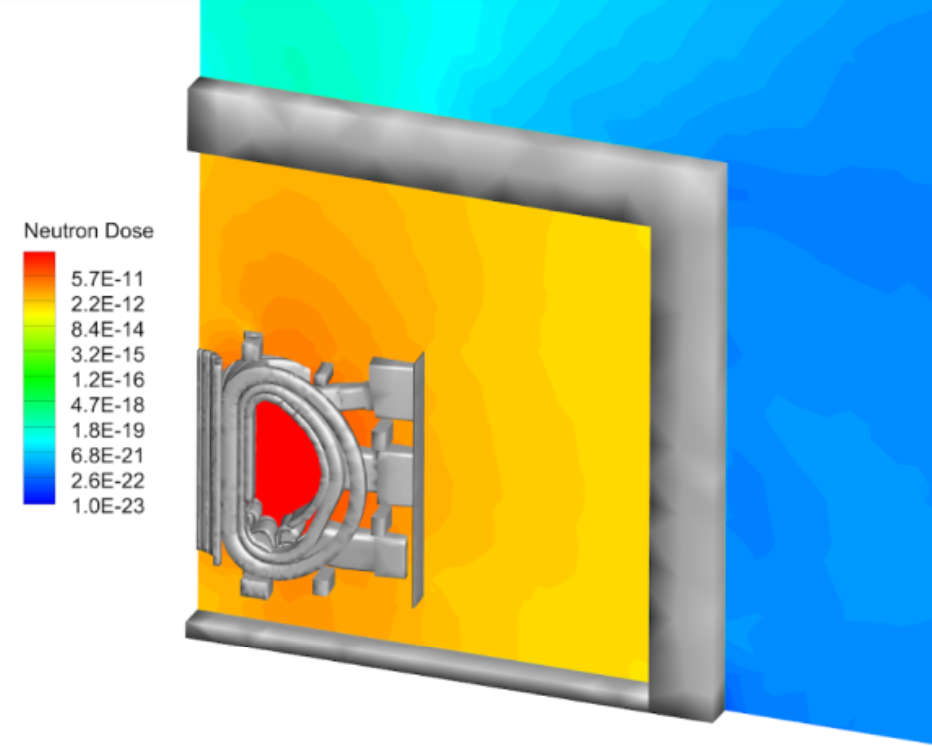Attila4MC-Cottonwood® was developed with the goal of providing an efficient, simple, and highly automatic CADIS1 and FW-CADIS2 weight window variance reduction workflow, regardless of geometric complexity. Whether your model contains several or several thousand parts, Attila4MC-Cottonwood can dramatically shorten and automate your Monte Carlo analysis cycle for deep penetration calculations.


Attila4MC-Cottonwood directly reads the MCNP mesh, the MCNP input file, and several user-specified parameters. From this information alone, Attila4MC-Cottonwood automatically generates the computational grid for the deterministic weight window generation, refining where needed and coarsening elsewhere, and rapidly providing efficient weight windows with minimal user interaction.


Cottonwood auto-generated computational mesh (left) showing adjoint solution field, and resulting MCNP solution field (right) using Cottonwood generated weight windows
Similarly, Attila4MC-Cottonwood also provides an optional automatic weight window grid definition feature, which will perform local clustering based on material half value layers, eliminating the need for users to manually construct a weight window grid definition, frequently a trial-and-error process. Once the deterministic calculation is complete, weight windows are automatically mapped to the MCNP weight window grid definition, and source biasing parameters are optionally punched to the MCNP input deck.
Attila4MC-Cottonwood generated weight windows can increase solution speed by as much as 3 to 4 orders of magnitude over analog with minimal user effort. For the tokamak example shown, the figure-of-merit (FOM) for the outside air dose increases about 3 orders of magnitude, from 7.2e-3 to 7.5 for the analog and Attila4MC-cottonwood FW-CADIS cases, respectively. With these efficiency gains, detailed full-field Monte Carlo solutions can be obtained within hours on laptops or desktops.

MCNP Calculated Neutron Dose Field Using Attila4MC-Cottonwood Generated FW-CADIS Weight Windows. Solution obtained in 35 minutes on a Dell Precision laptop
Reach out to us at sales@silverfirsoftware.com to see how Attila4MC-Cottonwood and Attila4MC can help streamline your calculation workflow, and to receive a no-obligation web demonstration on one of your real-world CAD assemblies.
Funding for the initial development of Attila4MC-Cottonwood was provided by Commonwealth Fusion Systems.
1 J Wagner, A Haghighat, “Automated Variance Reduction of Monte Carlo Shielding Calculations Using the Discrete Ordinates Adjoint Function”,
Nuclear Science and Technology, Vol 128(2), Feb 1998
2 J Wagner, D Pepolow, S Mosher, “FW-CADIS Method for Global and Regional Variance Reduction of Monte Carlo Radiation Transport Calculations”,
Nuclear Science and Technology, Vol 176(1), 2014